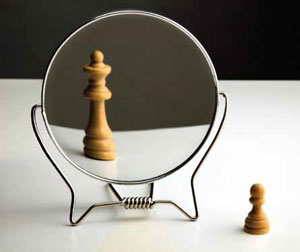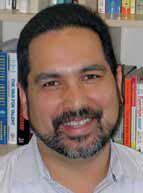I’m fortunate to live in a city with a world-class music venue: the Walt Disney Concert Hall in Los Angeles, CA. When I have attended concerts there, they have always sounded great to me—some of the best I’ve ever heard. The hall looks fantastic, too, with its warm, fir-clad, curvilinear, Frank Gehry designed interior. It is so beautiful, if fact, that I’m not sure I trust my ears when I’m there. Does music sound better there because the space is so visually appealing? Human sensory processing is so complex that sometimes we don’t realize that our own brains are fooling us. This type of sensory confusion may be attributed to a type of synesthesia—the condition in which the stimuli from one sense leads to involuntary experiences in a second sense— and it may be happening more often than we realize.
In 1995, a study was conducted by Japanese researchers Masaaki Kurosu and Kaori Kashimura with two ATM machines. These machines were functionally identical (the buttons on both units performed identical functions), but visually they were different. One of the machines had a utilitarian look, the other was designed with a beautiful interface. The outcome of the study has changed the way I perceive the world. Test subjects rated the betterlooking machine easier to use. They did not say it was nicer to look at, nor were they asked about the visual design of the ATMs. They were asked about usability, and they rated the better-looking machines simpler to use.
Ever since I read about this study, I’ve been more suspicious of my own brain (OK, some of you may have felt this way before I did). I now ask myself, “Is this person really as smart as she seems? Or am I attributing higher intelligence to her because she is good looking?” Would I think this song is as good if the video wasn’t amazing? Is this building as well designed as I think, or is my brain confusing overall functionality with the stunning exterior form? We may never know whether we get our wires crossed on such judgments, but it is useful to be aware that it happens.
I think our industry has frequently suffered from this type of brain jumble on the audio side. So much of our evaluation of loudspeakers has been done “sighted”, or seeing the speakers under test. At Harman, research scientist Dr. Sean Olive has studied the subject and has shown that “the sighted tests (versus blind) produced a significant increase in preference ratings for the larger, more expensive loudspeakers”. It is often difficult to conduct blind listening tests with professional products because of their size, but I have seen/ heard a couple of very good blind tests and they are often surprising. Why were they surprising? Because often our biases are not fulfilled when we discover the results. Blind tests keep our ears (brains) focused on real sound results.

Sometimes, though, we may be able to use this phenomenon to our advantage. When we design AV systems we are typically working in the visual and aural worlds simultaneously. When we do this, we should work hard on the overall visual appeal of our installations. Collaborating closely with the architects and graphic designers will lead to better customer experiences using AV systems. Improving the aesthetic appeal of a space and an interface will lead to a better overall technology experience for your customers, and you’ll received free points for usability.
Paul Chavez (pchavez@harman.com) is the director of systems applications for Harman Pro Group. He is a usability evangelist and a futurologist. Chavez has designed a variety of audiovisual systems ranging from themed attractions to super yachts. He has also taught and written on the topics of interaction design, audiovisual design, and networking.
The Dishonesty of Sighted Listening Tests
The question of whether sighted audio product evaluations produce honest and reliable judgments of how the product truly sounds was tested in 1994. A total of 40 people participated in these tests, giving preference ratings to four loudspeakers that covered a wide range of size and price. The test was conducted under both sighted and blind conditions using four different music selections.
The sighted tests produced a significant increase in preference ratings for the larger, more expensive loudspeakers. Brand biases and employee loyalty to Harman products were also a factor in the sighted tests, since three of the four products were Harman branded. One loudspeaker was a large, expensive ($3.6K) competitor’s speaker that had received critical acclaim in the audiophile press for its sound quality. However, little could overpower listeners’ prejudices associated with the relatively small size, lower price, and plastic materials of another loudspeaker in the listening test. In the sighted test, the expensive loudspeaker was preferred. In contrast, during the blind tests, the smaller, less expensive loudspeaker was preferred.
In summary, the sighted and blind loudspeaker listening tests in this study produced significantly different sound quality ratings. The psychological biases in the sighted tests were sufficiently strong that listeners were largely unresponsive to real changes in sound quality caused by acoustical interactions between the loudspeaker, its position in the room, and the program material. In other words, if you want to obtain an accurate and reliable measure of how an audio product truly sounds, the listening test must be done blind. It’s time the audio industry grew up and acknowledge this fact if it wants to retain the trust and respect of consumers.
—Sean Olive
